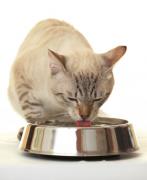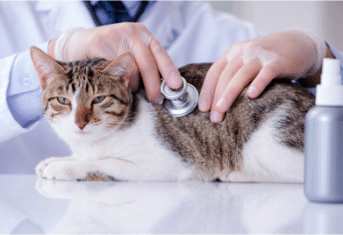Is Chronic Kidney Disease the Same as Chronic Renal Failure?

Is Chronic Kidney Disease the Same as Chronic Renal Failure?
One of @amcny’s Twitter followers posted the question that is the title of this post. This person also asked, “Should the high end of the normal range of creatinine be 2.4?” These are very good questions, especially for cat families since cats are seven times more likely to have kidney disease than dogs. I am devoting this week’s blog to the answers.
Kidney Tests
A standard panel of blood tests includes measurement of blood urea nitrogen and creatinine. These tests are commonly used to evaluate kidney function, but the results can be abnormal with dehydration, intestinal bleeding and a high protein diet. When combined with a physical examination and an analysis of the pet’s urine, they become a more powerful assessment of how well the kidneys work.
For many years, when veterinarians discovered elevations in blood tests to measure kidney function, we talked with pet families about chronic renal failure or CRF, and before that we talked about chronic interstitial nephritis or CIN. Today we more commonly use the term chronic kidney disease or CKD. As time passed, the name has changed to more correctly reflect our understanding of the disease. Chronic interstitial nephritis comes from microscopic evaluation of a kidney biopsy, something most pets never have. Chronic renal failure was a confusing term to pet owners who were unfamiliar with the medical term for kidney – renal. Failure was a misnomer since the abnormal blood tests indicate decreased function, but not necessarily an absence of function or failure. Thus, renal became kidney and failure was swapped out for disease.
If There is Chronic, There is Also Acute
In medicine, if a disease has the modifier “chronic” you can bet there is also an ”acute” form of the same disease. Acute renal failure has a very abrupt onset in a decline of kidney function and is caused by a variety of disorders including leptospirosis, antifreeze ingestion and lily intoxication. Some pets with acute renal failure completely recover; others improve but continue to have chronic kidney disease and sadly, others don’t make it. The term chronic indicates a long term process that may or may not get worse, but one that, with treatment, can achieve a good quality of life.
Is 2.4 the High End of Normal Range for Creatinine?
Normal range is another term largely gone from the veterinary lexicon because normal depends on the age, sex and even breed of the dogs or cats used for comparison. Now we use the term “reference range or reference interval.” The upper end of the reference range is variable from lab to lab, based on testing methodology, equipment and the exact animals used to develop it. Perhaps more important than the exact reference range from the lab is what is normal for your pet, i.e. what was the creatinine last year and the year before and is the number trending upwards? When that happens, it suggests decreased kidney function and suggests more testing may be indicated.
Thank you to our Twitter follower for asking such important questions. If you are interested in more information about what blood tests tell your veterinarian about your pet’s health, read this recent blog on blood tests. Learn more about feline kidney disease.

































